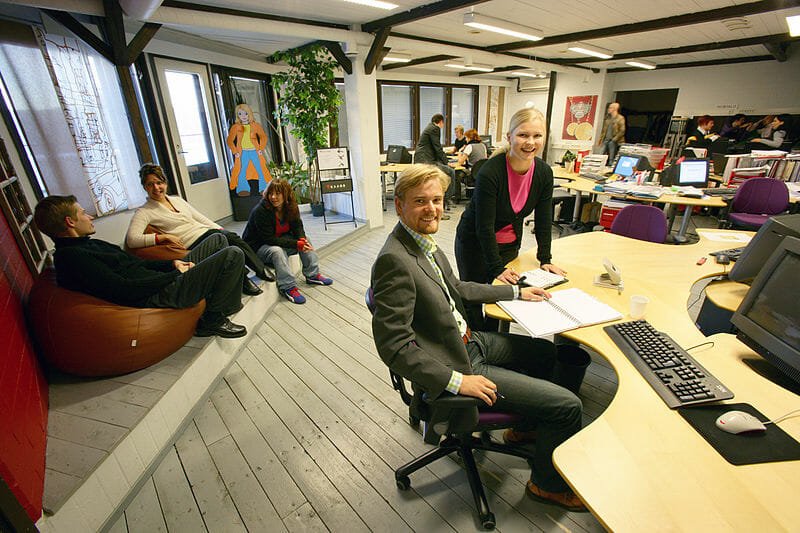News
Functional spaces
Over the past few weeks, we’ve highlighted issues related to employee productivity and the indoor work environment. And while effective lighting, efficient ventilation, and well-managed noise are important considerations, ultimately, these must serve a space that’s functional. A mountain lake on a sunny day offers natural light, peaceful surroundings, and an endless supply of fresh air, but it may not be the right location for your 2 pm client meeting.

(please forgive the cheesy, posed look and just focus on the office design )
Well-designed functional offices integrate design elements that promote effective workflow. If you’ve ever remodeled a kitchen, you may be familiar with the concept of a work triangle, the area bounded by the refrigerator, stove, and sink. Home kitchens designed with efficiency in mind arrange these elements in a way that the cook can access any one of them with only minimal movement.
Similarly, an office designed with function offers features and an arrangement conducive to effective workflow. A few examples of this idea include the following.
- Offer informal meeting areas. Formal conference rooms are perfect for client meetings, but they can be overkill for casual brainstorming sessions. Particularly if your office features an open floor plan, casual meeting areas offer a sense of privacy without feeling sequestered away from the action.
- Right angle aren’t always right. Row upon row of square cubicles may have been the standard for several decades, but uninterrupted right angles can make a space feel clinical. Grouping desks into angled clusters offers character and may subconsciously encourage the literal “outside the box” thinking so valued in today’s innovative companies. Even if unusual desk arrangement isn’t possible, consider breaking up rows of desks with semi-private sitting areas, lounges, plants, or other features.
- Consider your talent. While Boomers may feel right at home in traditional offices, remember that Millennials grew up living their lives on the internet and in coffee shops. Open spaces that encourage interaction while also allowing personal space may be key motivators for this demographic.
- Offer alternative desk options. The standard-issue desk and chair may be traditional, but employees are increasingly asking for tall desks that offer the option of standing for periods of time. Not only do tall desks appeal to some workers, but they also help break up a space. Interrupting rows of traditional desks with tall workstations can make one large room feel more like many smaller ones.
By combining novel approaches to office design with proven technologies that contribute to occupant comfort and well-being, employers and building owners make an investment in the future of their company. And done right, this investment can pay dividends for years to come.
